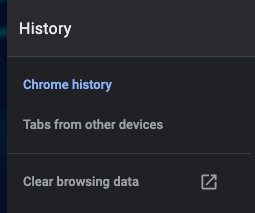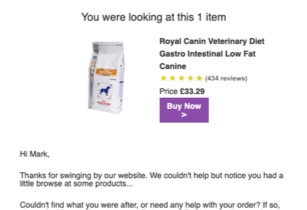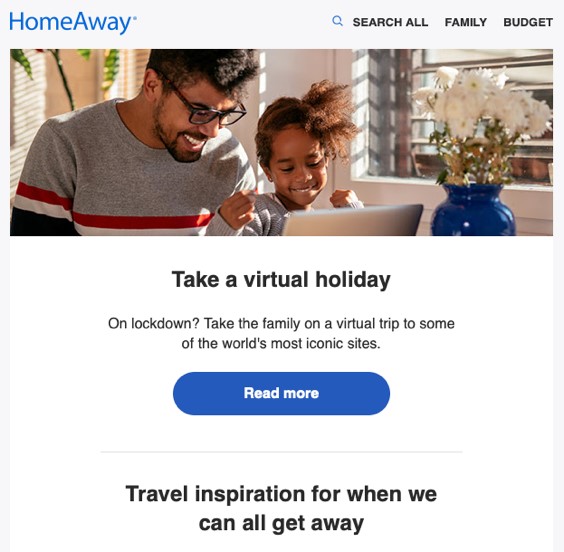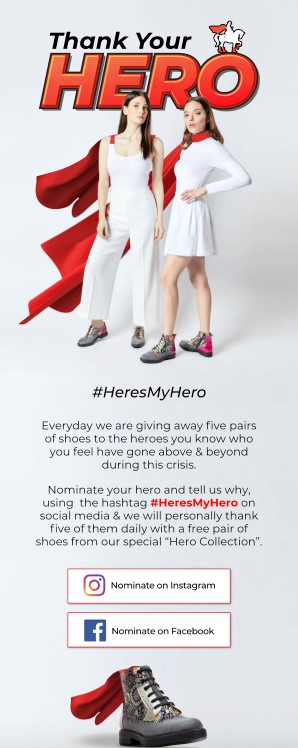

Having worked within Marketing for over 20 years, I inspect every brand communication or advert that I see with a degree of measurement around the messaging, the timing, the call-to-actions (CTAs), and also the technology powering it. For instance, if I like the email design, I look up who their Email Service Provider is. If they are using social in a gamification way, I try to identify what solution they are using to create their poll, quiz, or photo contest. Perhaps this makes me a tech geek? Or perhaps it just makes me a tech-savvy consumer. Either way, how I think about technology has changed the way I shop, as it has for many other consumers.
For instance, if I see a product I like, but a delivery charge that I don’t like, my first step is to check whether they have technology in place to support abandon basket / cart. The second step to work out is whether it triggers upon me exiting the website, or after I have left – the latter usually meaning I will register an account (informing them who I am) and ensuring that I add the product to my cart whilst signed in before leaving the site. The result: often a free delivery or discount off my order. I also identified some sites where I can clear my internet cache and repeat the same process again when I make my second purchase. This is another example of where sometimes technology can be used by the consumer, to drive their desired outcome.


What these above examples highlight is that tech-savvy consumers understand the part technology plays, in both customer acquisition and retention strategies brands have in place. They also highlight the importance of brands in configuring their programs to cater to these differing behaviours exhibited, to ensure that it works for both parties.
There is no doubt that COVID-19 has presented a challenge to brand marketers. Firstly, with brands flooding our email inboxes with messages around how their business is adapting to the crisis; everything from how they are keeping employees safe, to supporting their customers in dealing with huge volume demands, and contactless delivery. What was interesting for me was the fact that whilst some brands ceased marketing as usual, some continued with empathetic messaging and others continued as if nothing had changed – it was just business-as-usual.
Some sub-industries were more impacted than others during this crisis; for instance, DTC (direct-to-consumer) subscription-based services saw exponential growth, alongside publishing and entertainment, as people sought information, or mental stimulation during the global lockdown. Others, especially brick-and-mortar retailers, luxury fashion, and travel in particular, saw the complete opposite. However, it is not all doom and gloom. What I personally witnessed was a mix of good and bad examples of marketing during this crisis that show how these brands either won or failed in the bid to earn consumer trust, and a blend of technology and relevant messaging was the key.
Here are just a few examples from which brand marketers can draw some learnings from my own personal experiences during the coronavirus crisis.
Example 1: Technology and Messaging Fail
When supermarket shelves were emptying faster than they could be restocked, many consumers went online to find what they needed. I always buy my dog’s food online from the same supplier, as his food is specific to his health issues and they offer the best online price. To be clear, this was a routine-purchase, single bag of dog food and not a “hoard” or “panic buy.” But regardless of my intention, I found that my normal product was out of stock.


I left the website and immediately started searching for it elsewhere, as I only had a few days’ worth of food left for him. Within minutes I received an abandoned browse message that was triggered from their personalization platform vendor. Thinking perhaps I had made a mistake, I returned immediately to their website only to find that the product was still out of stock in all sizes. Now as a marketer, I know that abandonment tactics are essential in winning lost revenue opportunities, but what this illustrates is what happens when business rules are not in place to ensure validation on stock availability before sending. This example shows that “right time” does not necessarily carry the right message.


Now, an item that I have browsed being back in stock or perhaps even a viable in-stock alternative product would have made my entire experience positive and created trust with the brand.
Example 2: Technology and Empathetic Messaging Win
According to a recent article by Forbes, the global travel industry will lose $314 billion in revenue in 2020, and with global lockdowns in place, travel marketers have nothing to sell, right? Wrong. I received an email communication from HomeAway, a holiday rental marketplace for both property owners and renters. Their messaging showed empathy, and also provided a link to virtual tours enabling the email recipient to immerse themselves and dream about destinations they have always had on their bucket-list.


The CTA in the email took me to a page with a host of inspirational places to visit – and then further links to take a virtual tour using a JavaScript plug-in, giving me the opportunity to walk the Great Wall of China. Not he CTA in the email took me to a page with a host of inspirational places to visit – and then further links to take a virtual tour using a JavaScript plug-in, giving me the opportunity to walk the Great Wall of China. Not only did it provide entertainment at a time when I had played all of the Scrabble I could possibly handle, but it gave me a chance to gain inspiration and look forward to a time when perhaps I could make that trip.


Most importantly, as a consumer I will remember that brand approach: the empathy they illustrated and trust established by not trying to sell me trips, when safe travel could take some time to resume.
Example 3: Technology and Empathetic Messaging Win
My wife’s favourite shoe brand, Shoe Embassy, sent me an email which did not try to sell to me, but to persuade me to nominate a hero on social media to provide them with a chance to win a pair of shoes from their special hero collection.
Combining email with social media and showing this level of empathy definitely plays to a consumer-first approach, again creating trust with their email subscribers, and building social advocacy. Most importantly, it gives an opportunity to highlight the heroes in this crisis, our friends and family in the NHS; first responders and healthcare providers who are putting their lives on the line every day, as well as those who are providing local support to the extremely vulnerable, to ensure that they get supplies in order to survive.
This example exemplifies how a brand can implement omnichannel approaches to provide connected customer experiences with a positive message putting them front of mind with consumers.


Marigold Engage provides a business-to-consumer marketing automation platform that enables brand marketers to navigate these uncertain times. Whether it is through acquiring new customers or, for brands that are seeing growth, retaining customers, when things start to return to normal, our technology can help you to message empathetically, manage privacy and preferences, and gain consumer trust to build stronger brand communications strategies.
Marigold: where relationships take root.